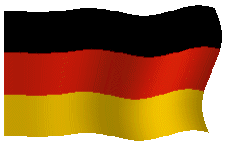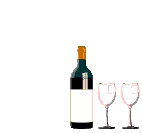
THE HOME WINE COURSE ©

Introduction:
The wines of Germany, typically sweeter-style white wines (with a few rather acidic, washed-out reds) have gotten a bad rap in the United States market. The American mindset has been fixed on dry white wines, particularly Chardonnay, and the mention of any sweet wine automatically evokes an unpleasant memory of artificially-flavored pop wines in the Boone's Farm mode. The fact that premium German wines (beyond Liebfraumilch) are masterfully sweetened in the most natural way with a high quality winegrape juice (sussreserve) and the fact that German wines aren't always sweet escapes the fledgling wine enthusiast all too often. But for those of us who appreciate a variety of tastes that might fit a particular moment or meal German wines provide an exquisite alternative to the prevailing dry white wine spectrum. As a refreshing foil to foods spiced with hot peppers these low-alcohol, fruit-filled wines have no match.
Levels of Quality
Perhaps due to the difficulty of nursing a grape harvest to full maturity in the northerly lattitudes of Germany, official quality designations for German wines relate specifically to increasing degrees of varietal ripeness (sweetness). The lowest quality wines in Germany are simply labeled as Tafelwein - Germany's forgettable vin ordinaire. The next level, QBA, represents a quality wine from a specific region which requires added sugar (prior to fermentation) to be made into wine. Typically the best wines of Germany are labeled as Qualitatswein mit Pradikat (QmP) which indicates a naturally fermented wine (no sugar added) with special attributes. With QmP wines degrees of vintage ripeness are qualified by German wine laws and these degrees are listed here in ascending order of fruit maturation: Kabinett, Spätlese, Auslese, Beerenauslese, and Trockenbeerenauslese. Another term, Eiswein, is utilized to indicate an extremely overripe harvest that also was picked after being frozen on the vine. These last three designations mentioned are always associated with very sweet, botrytis-spicy, dessert-level wines made in tiny (and expensive!) quantities. Kabinett, Spätlese, and Auslese are finished (dry or sweet) according to winemaker preference with varying degrees of wine-grape juice added to balance excessively high fruit acids. German vintners have been experimenting for years with drier styles of wine labeled as Trocken (very dry) and Halbtrocken (semi-dry). Their efforts so far have been less than spectacular.
Grape Types
The varietals used to make German wines are limited to a handful of vitis vinifera grape types that will grow to maturity in Germany's rather cold climate. The most noble of these is the Johannisberg Riesling known for its ability to withstand the hardest of freezes. Wines made with Riesling are commonly very floral with fruit reminiscent of ripe apricots or peaches. Look for the varietal name Riesling on German wine bottles to assure yourself of having purchased the finest of German wines. Other grape varietals include: Sylvaner (an undistinguished workhorse grape utilized primarily in the Rheinhessen and Franken regions), Müller-Thurgau (the best of the various Riesling/Sylvaner crossbred vines used primarily in the Rheinhessen, Rheinphalz, Nahe, and Franken regions), Ruländer (German Pinot Gris used to make drier wines in the Baden district) and rarely, the spicy Gewurztraminer grape. Reds are produced in Germany but aren't preferred generally due to the lack of full ripening, with the exception of perhaps the wines of the more southern Baden District.
Regions of Production
Most German vineyards are located near the banks of several rivers found in the southwestern quadrant of the country. The Rhine River, flowing north between Germany and France, roughly defines the southernmost portion (Baden district) and the central portion (Rheinpfalz, Rheinhessen, and Rheingau) of Germany's vineyard area. The Mosel River, originating in north central France and flowing north towards the Rhine to the east of Luxembourg, defines the western branch of Germany's viticultural districts, while the Main River (another Rhine tributary) forms the eastern segment (Franken district) of Germany's prime vineyard real estate. Other tributary streams, including the Saar and the Ruwer (Mosel River), the Nahe and the Ahr (Rhine River) complete the overall geographic vineyard layout in Germany.
Summary
For the purposes of this course our tastings will focus on the Kabinett (semi-dry), Spätlese (semi-sweet), and Auslese (medium-sweet) Riesling wines of the Rhine and Mosel Rivers, with the occasional inclusion of an extraordinary dry wine or other outstanding German varietal offerings (Sylvaner, Müller-Thurgau, or Gewurztraminer, etc.) from various German viticultural subdistricts. Remember to try the sweeter style wines with intensely-flavored foods, like hot and spicy cuisine or any of the more piquant cheeses.
Tasting Notes:
